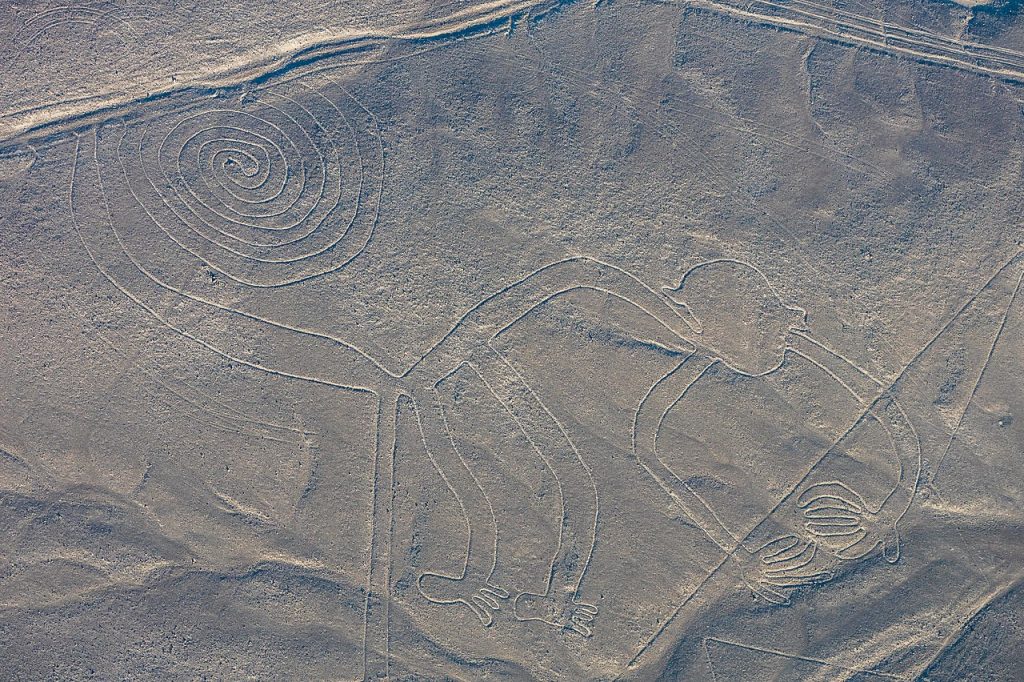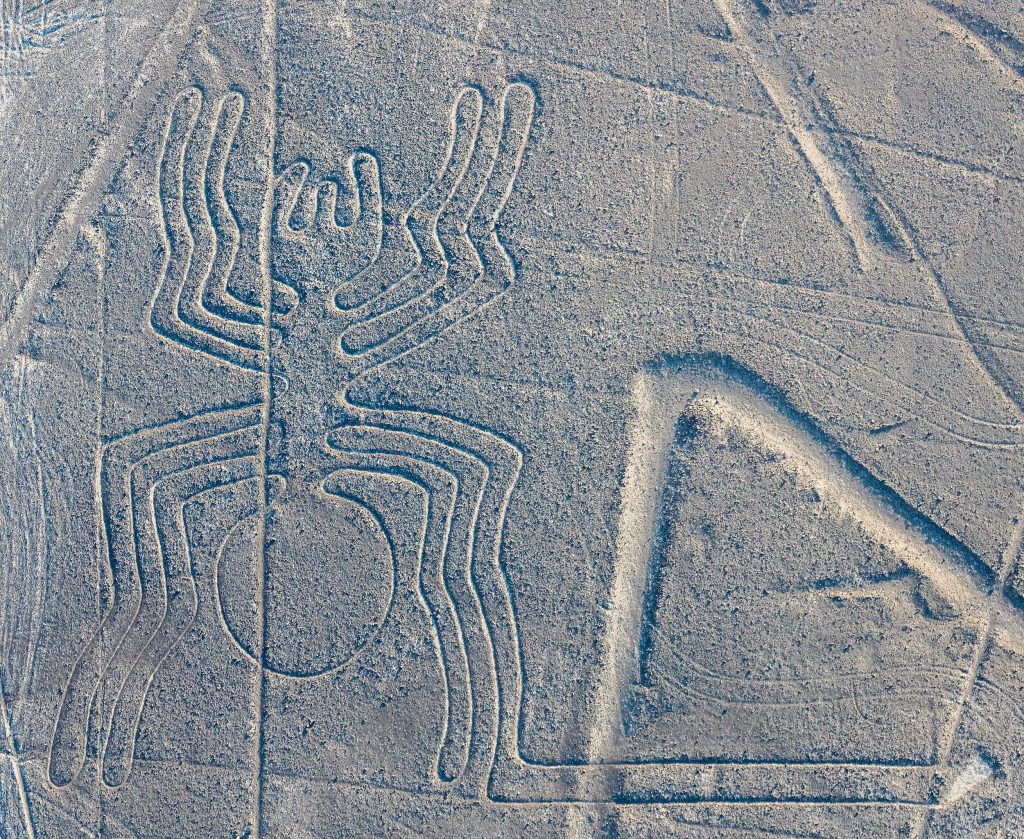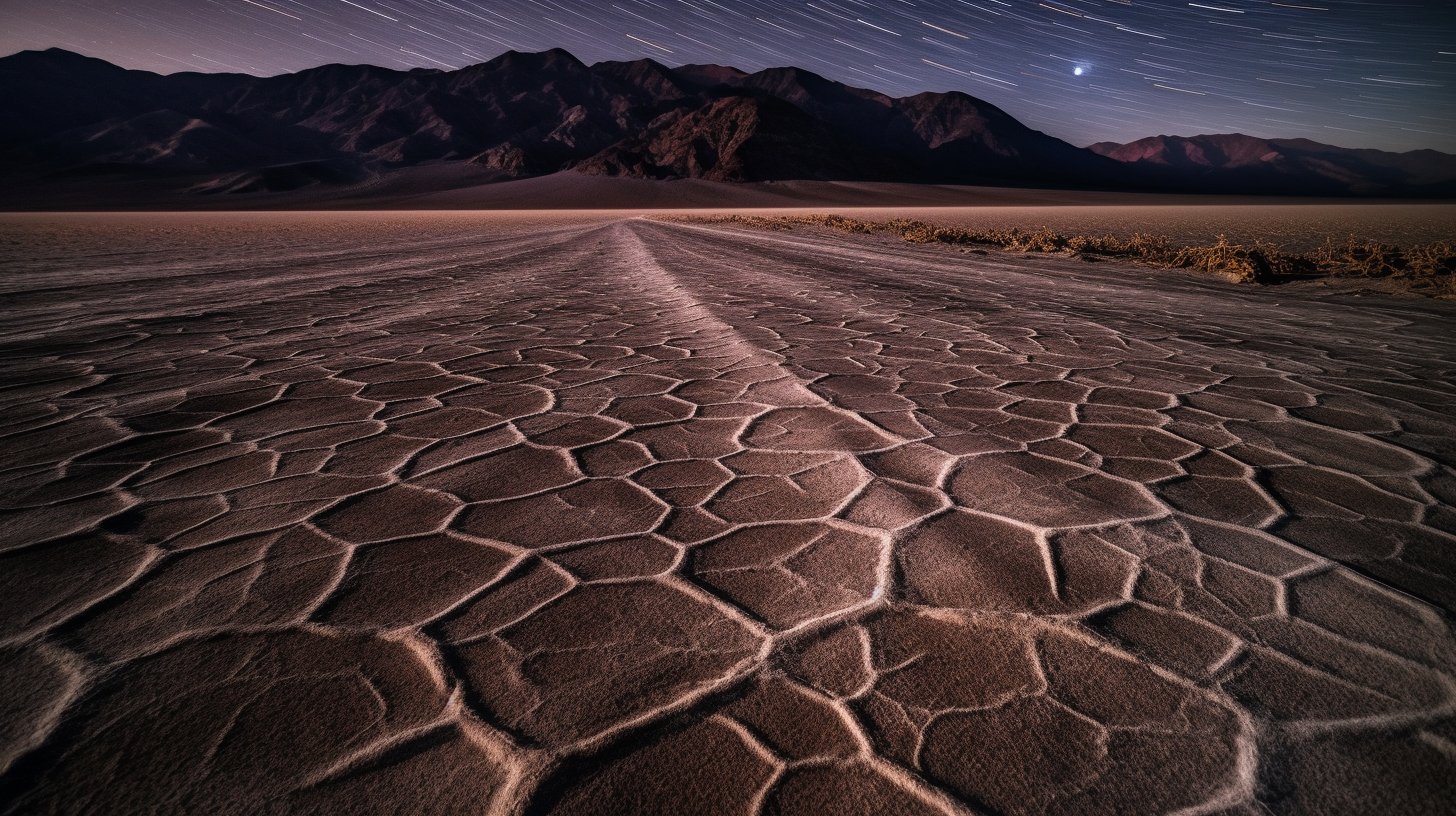A vast, arid plain in southern Peru holds one of the most mystifying archaeological sites in the world: The Nazca Lines. This series of colossal geoglyphs, crafted into the desert floor over a thousand years ago, continue to intrigue researchers and enthusiasts alike. The immense scale, intricate designs, and the enigmatic purpose behind these creations offer a captivating look into the past, while recent discoveries shed new light on their intricate construction and possible meanings.

The Geoglyphs and Their Discovery
Strewn across approximately 450 square kilometers of the Pampa Colorada, between the towns of Nazca and Palpa, the Nazca Lines comprise over 800 straight lines, 300 geometric shapes, and 70 zoomorphic designs. These range from simple lines to complex figures depicting animals, plants, and other abstract shapes. Some of the most recognizable forms include the hummingbird, monkey, and spider – each meticulously etched into the rugged desert floor.
Discovered by Peruvian archaeologist Toribio Mejia Xesspe in 1927, the Nazca Lines were initially considered as part of ancient trail systems. However, the true magnitude of these figures didn’t come to light until the 1930s when commercial airlines began flying over the region. From this aerial perspective, the lines’ remarkable designs and vast scale became evident, capturing global attention.
Origins and Construction
The Nazca Lines are believed to be the work of the Nazca culture, an ancient society that thrived in the region between 200 BC and 600 AD. Despite their age, the dry, windless, and stable climate of the Nazca desert has preserved these lines, allowing them to be observed and studied even today.
The construction of the Nazca Lines showcases the precise planning and execution abilities of the ancient Nazca people. Contrary to popular belief, recent research by Japanese scientists from Yamagata University indicates that these lines were not created by removing dark surface stones to reveal lighter soil underneath. Instead, it appears the Nazca people used a technique involving the careful placement of stones along the lines. This method was corroborated by advanced 3D imaging which revealed that some stones were positioned deliberately, suggesting human manipulation rather than natural desert processes.

Decoding the Purpose
While the exact purpose of these immense desert figures remains elusive, researchers have proposed several theories over the years. Some argue that the Nazca Lines served religious or ceremonial purposes, acting as sacred paths leading to places of worship. Others hypothesize they were an astronomical calendar, with certain lines corresponding to significant celestial events.
However, the most recent study published in Heritage Daily proposes that these lines were designed to be walked upon. This theory emerged from the discovery of ceramic fragments and shards along the geoglyphs. It’s possible that these ceramics, often containing offerings, were used in religious rituals and were carried along the paths etched into the desert.
Recent Discoveries and Further Investigations
Research into the Nazca Lines continues to bear fruit. In 2022, scientists revealed 168 previously unknown glyphs, discovered through the use of AI technology, demonstrating that there’s still much to learn about these sprawling creations.
Also, recent investigations utilizing drone technology have revealed new aspects of the lines. As per the AP News report, these aerial devices captured intricate details of the lines, providing fresh perspectives to archaeologists and prompting new lines of inquiry.
Impact and Preservation
The Nazca Lines are a testament to the advanced planning and construction capabilities of ancient cultures. They’ve inspired countless studies, documentaries, and even artworks, capturing the public’s imagination worldwide.
However, preserving these lines for future generations is a constant challenge, with threats posed by human activity and natural processes. The site, declared a UNESCO World Heritage Site in 1994, is protected by Peruvian laws, and ongoing conservation efforts aim to ensure the Lines’ survival.
The Journey Ahead
As technology evolves, so do our methods of exploring and understanding the Nazca Lines. While they continue to puzzle us, each discovery brings us a step closer to unlocking the secrets of these ancient, vast desert drawings. For now, the Nazca Lines remain a silent but potent testament to the ingenuity and mystery of the past, prompting us to continue our quest for knowledge about our ancestors and their fascinating cultures.
Want to know more?
For those intrigued by the Nazca Lines’ intricate designs and their historical significance, numerous resources offer a deeper exploration of these ancient geoglyphs.
- Google Earth provides a unique opportunity to explore the Nazca Lines from a bird’s-eye view, mimicking the vantage point that best displays their true complexity and scale.
- Britannica’s Nazca Lines resource provide further reading and photos from the Nazca Lines.
- Guided Tours – for those who wish to experience the Nazca Lines firsthand, several tour operators offer trips to this ancient site. Perhaps even a flight over the Nazca Lines via AeroNasca?




